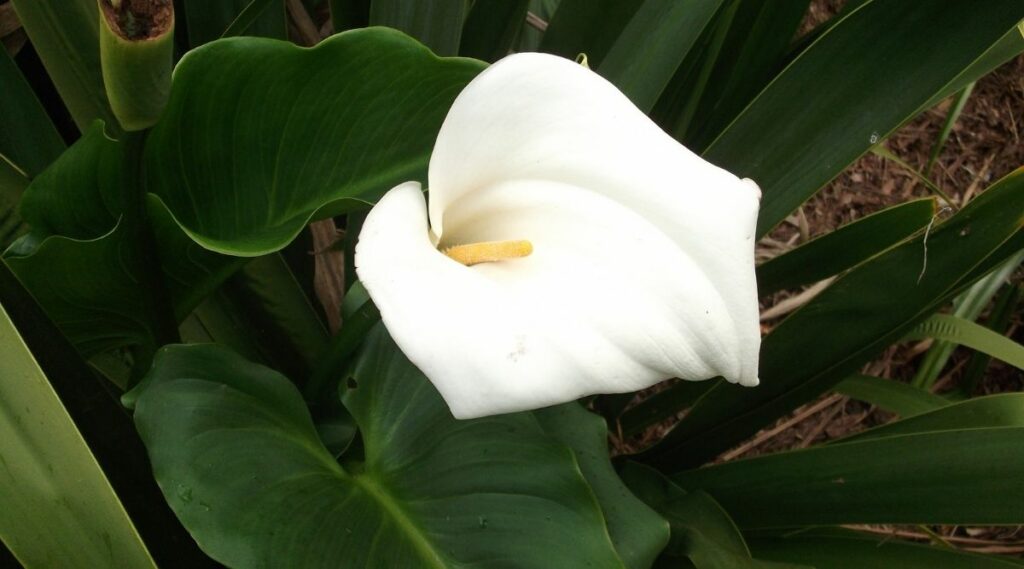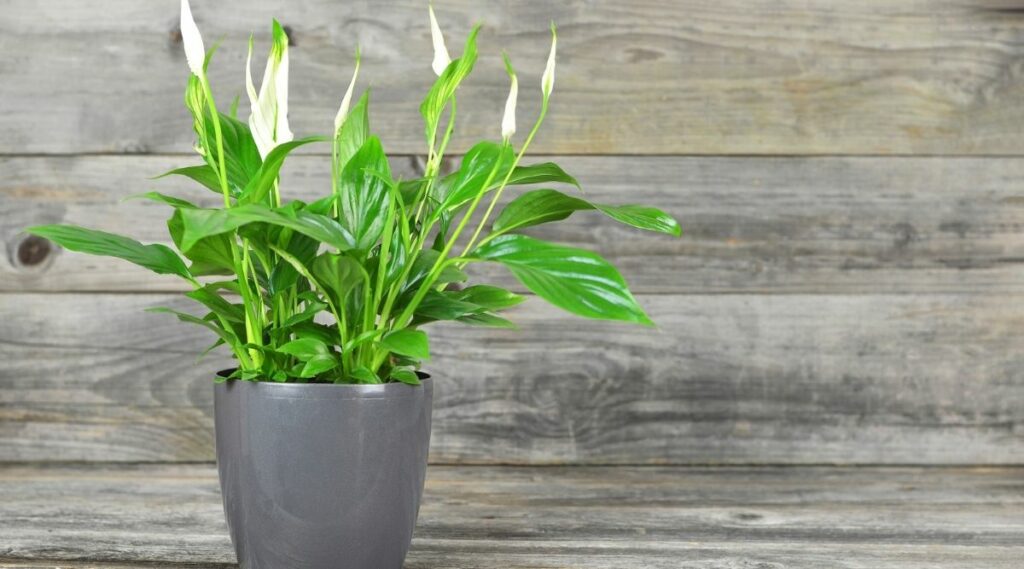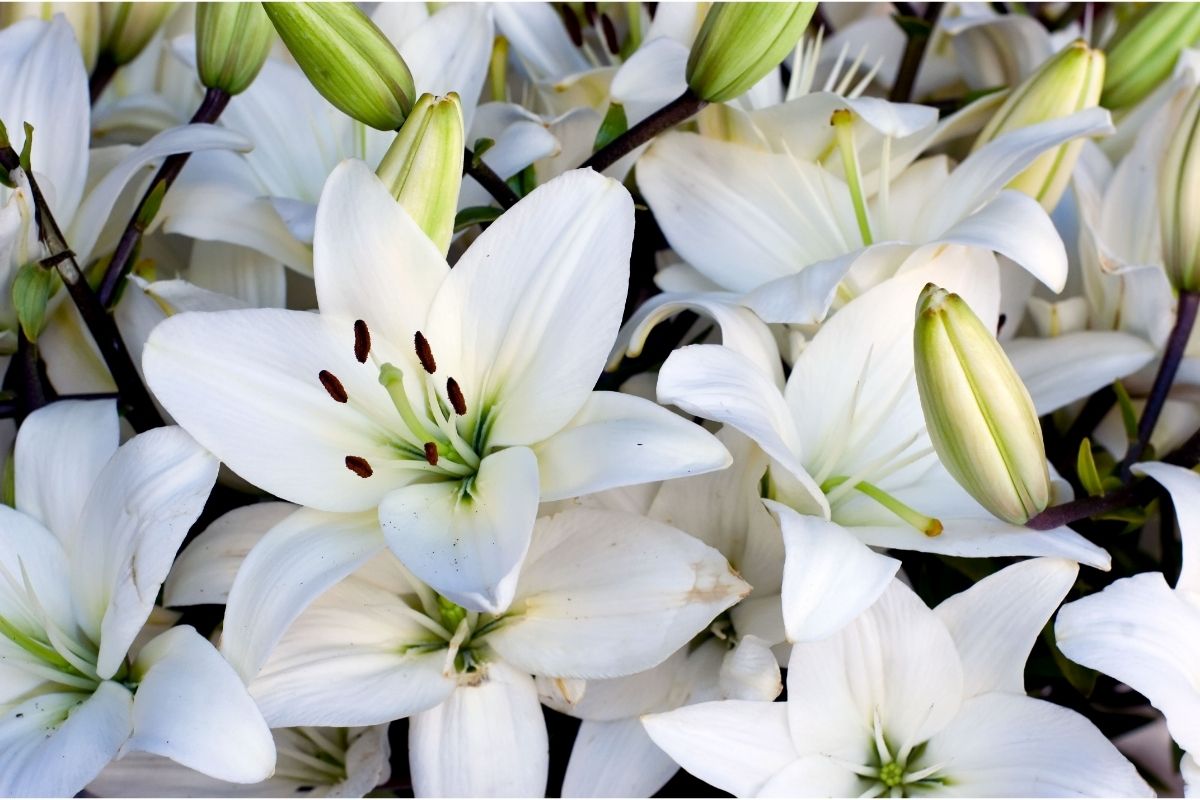Peace lilies are a wonderfully rewarding plant to have around your home. Not only do their pretty white blooms light up a room, but their green leaves are excellent at removing mold spores naturally from the surrounding room.
This helps to give you cleaner air around your home. Peace lilies are also super easy plants to care for and are one of the best indoor plants to choose from.
So if you live your peace lily plant, you may be wondering how long it will live for. If you give it the proper care, can your peace lily plant live forever? How long do peace lilies live for, anyway?

Today, we’re going to cover everything you need to know about peace lilies. We’re going to cover how long the plant lives, as well as how to care for your peace lily.
So you can keep those white flowers flourishing in your home for as long as possible!
How Long Do Peace Lilies Last?
Your peace lily will last you anywhere between 3 and 5 years. Ultimately it will come down to the care you give your peace lily. It’s fair to say that a happy plant is likely to live even longer.
You will need to find the correct placement in terms of light, get the watering schedule down, and ensure that you trim away any yellow leaves or brown leaves.
Your peace lily care will be essential for ensuring that your indoor peace lily lasts you for as long as possible.
When it comes to giving your indoor peace lily the right environment, it’s important to remember that this is a tropical plant that is used in areas of high humidity and lots of warmth.
So to make your peace lily last you even longer, you will need to mimic this natural environment as much as possible.
How To Care For Your Peace Lily
It’s essential to remember that your peace lily will enjoy moist soil that isn’t allowed to dry out too much.
If the soil becomes too dry, this can cause your peace lily’s leaves to wilt and turn yellow. You should avoid overwatering your peace lily, too, as too much water will cause root rot.
This is when the soil has become too waterlogged, and the roots are constantly submerged in water. It will be best to allow excess water to drain away from the roots to prevent this root rot from occurring.
You can test whether your peace lily needs to be watered by sticking your finger into the soil. If the soil is dry, then it will need watering. This should keep your soil moist enough to keep your potted plant happy.
To get your peace lily to produce the signature white flowers that you’re after, you will need to place it in an area of indirect sunlight in your home. It’s best to avoid direct sunlight, as this could burn the leaves and damage your plant.
If you choose a bright, north-facing window in your home, this should give your houseplant enough indirect light to keep it happy.
The temperature of your peace lily’s environment will also be crucial. You will need to avoid letting the indoor temperature dip below 40 degrees Fahrenheit, as this will kill the roots of your houseplant.
To get the right humidity levels, you may wish to consider placing your peace lily in an area that will mimic its more natural habitat, such as a shower room or bathroom.
So all in all, you will need to give your new houseplant consistent moisture levels, adequate sunlight, as well as the right humidity level to keep the peace lily happy.
Can Peace Lilies Last Forever?

If you have had your peace lily plant longer than the average lifespan of the plant, you may be wondering whether it can last forever.
Sadly, the average lifespan of a peace lily is just a general rule of thumb for your potted plant. Just because it’s lasted longer than the typical 5 years doesn’t mean that it will actually live forever.
It will all come down to the care and attention that you give your plant. If you take very good care of your peace lily, it is likely to stay happy and healthy for many years to come.
However, it is unlikely to last forever. You will need to provide your bathroom plant with the adequate care it needs to last as long as possible.
How Do You Know When Your Peace Lily Is Dying?
You should be able to tell if your peace lily is dying from the state of the plant leaves. If the leaves have turned yellow or brown, then there are likely environmental issues that will need to be addressed to give your plant the adequate care that it needs.
If the majority of the foliage is brown or even black leaves, then it may be beyond help.
The best way to prevent your peace lily plant from dying is to monitor its health regularly.
If you notice the leaves or flowers starting to wilt, this could be an indicator that something isn’t quite right with your peace lily. There may be excess water around the roots, leaving them waterlogged.
Perhaps the temperature has dipped too low, or the humidity levels aren’t quite right.
How Do I Keep A Peace Lily Alive?
As we’ve mentioned in more detail above, the best way to keep your peace lily alive is to give it the proper amount of care.
This will mean giving your peace lily the indirect sunlight it needs while ensuring it has plenty of bright light to stay happy. You will need to water your peace lily regularly to keep the soil moist, but not too wet.
During the summer and spring months, you will also need to give your peace lily liquid houseplant food. This will give your plant all the nutrients that it needs to stay happy and healthy.
If you notice any dropping white flowers, then you will need to dead-head these to encourage better growth. Make sure to wipe the leaves free of dust so that they can also get the correct amount of light.
In Summary
And there you have it! You now know everything there is to know about the peace lily plant. It has an average lifespan of between 3 and 5 years. However, the lifespan of your particular peace lily will entirely depend on the care and attention that you give it.
You will need to ensure that your houseplants are getting enough light, water, and humidity to keep them happy.
As long as you give your peace lily the right amount of care, it will last you for many years to come. And who knows? It might even survive longer than the average of 5 years!
- Best Hanging Plant For Low Light - September 4, 2023
- Best Indoor Plants Florida - August 28, 2023
- Best Plants For Bathroom Smells - August 21, 2023








